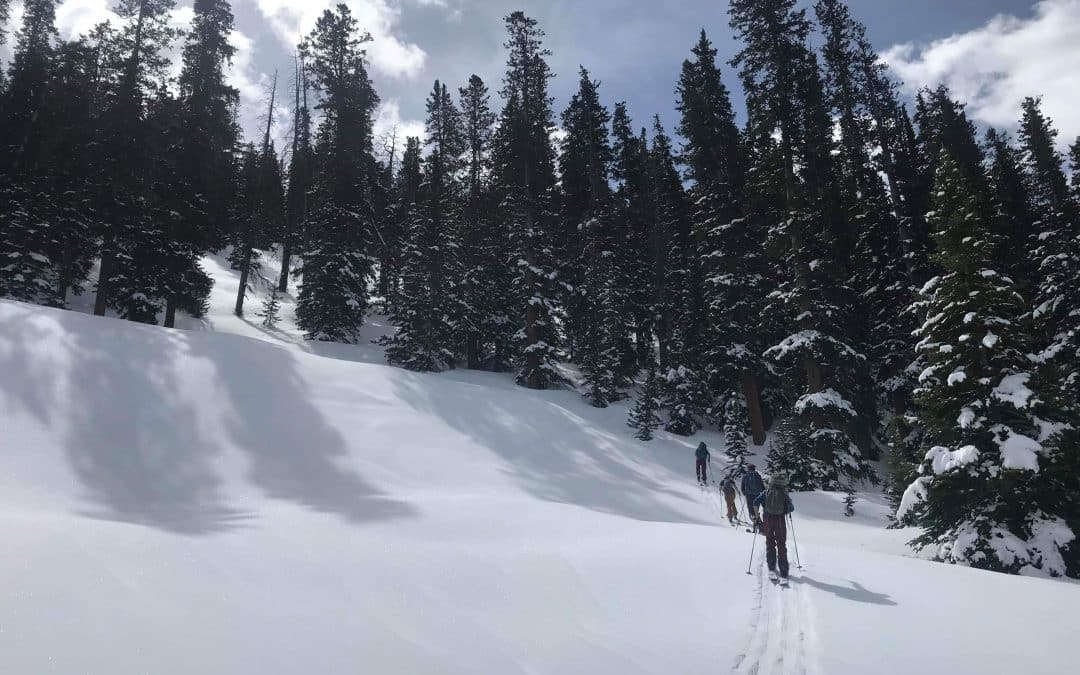It turns out skiing uphill for six miles laden with a backpack filled with thirty pounds of clothes, food, and beverages cannot be done with just one liter of water and two beers for lunch.
A group of six of my friends and I were heading toward Seipel Hut outside of Eagle, Colorado. The hut was nestled deep in the backcountry accessed by a low angle path marked by blue diamonds nailed on trees. These huts exist all over Colorado, thirty-four of them managed by volunteers from the 10th Mountain Division Huts Association. The huts are connected by 350 miles of marked routes.
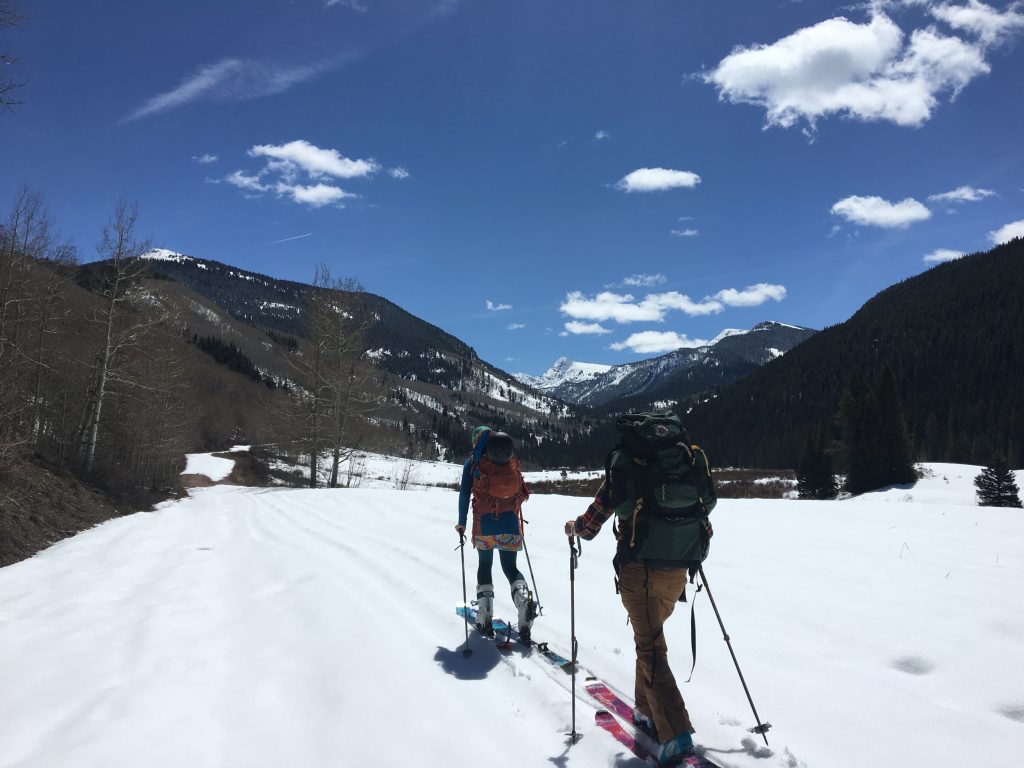
The path meandered, giving stunning views of a valley ringed by steep, craggy peaks. We winded through tall bristlecone pine trees and groves of aspens, small buds on the parchment-colored branches a sign of a long-awaited spring. Vertical lines on the snow-covered mountains indicated a risk of wet slides. This kind of avalanche danger is most common in the springtime when temperatures rise and sticky wet snow detaches from an icy layer beneath. Since we would be skiing pitches that were no more than 30 degrees and passed beneath nothing steeper, we considered ourselves relatively safe.
Five hours later, we arrived at the spacious hut with large windows overlooking the reddish-brown plateaus of western Colorado. We immediately started boiling water to drink and stoking the wood stove. There were two floors, with two bedrooms upstairs and a large bedroom, kitchen, and small L-shaped couch on the ground floor. The snow outside went up to the window sills.
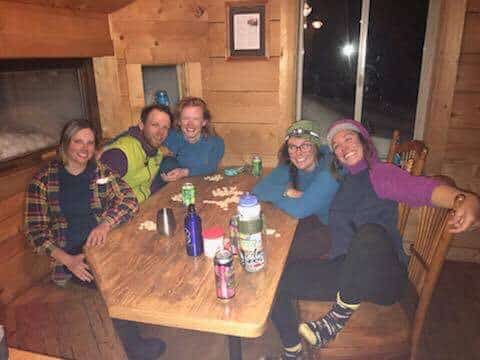
We found a small instructional sign to figure out how to light the gas lanterns. There was no running water or electricity, everything powered by gas. Water was acquired by melting snow on the wood stove. Everyone pitched in to help cook dinner, a burrito recipe perfected. We feasted on toasted tortillas filled with marinated steak, Spanish rice, refried beans, queso fresco, homemade salsa, and an incredible creamy sauce we slathered over corn on the cob.
We sipped on local beers and began a competitive game of Bananagrams. It lasted only two rounds before we all decided to go to bed, our legs and lungs exhausted by the day’s exertions. Large windows framed the sunset, which faded from bright orange to streaks of rose and periwinkle blue. I bunked with my friend who read me an adventure story from a book kept on a long shelf at the top of the staircase as I dozed off. The hut was kept warm by the wood stove, so much so that I used my sleeping bag as just a blanket.
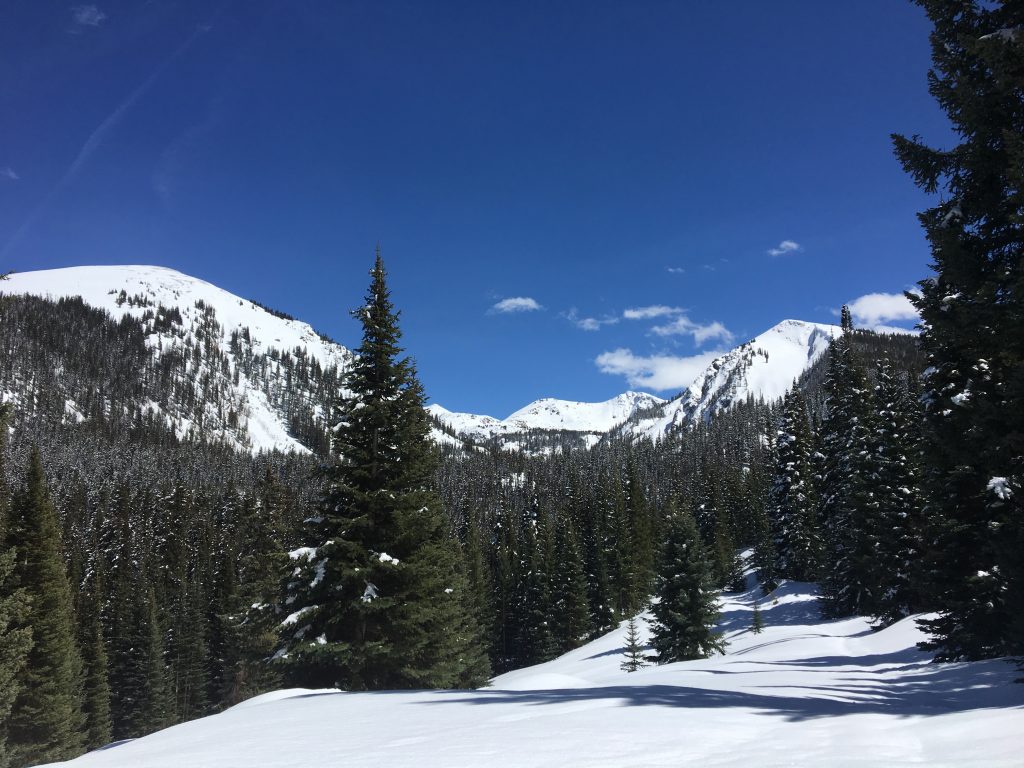
In the morning, we had eggs and toast and started to pack and clean the hut. We decided to get some extra turns in and skinned another half mile above the hut. The snow was dense, conditions varying depending on if we were in the sun and the shade. Yet we hooted and hollered on the way down, every turn feeling all the better since we’d gotten there by our own power.
We returned to the car later that afternoon after a descent that took half the time as the way up, taking long lazy turns once we returned to the switchbacking path.
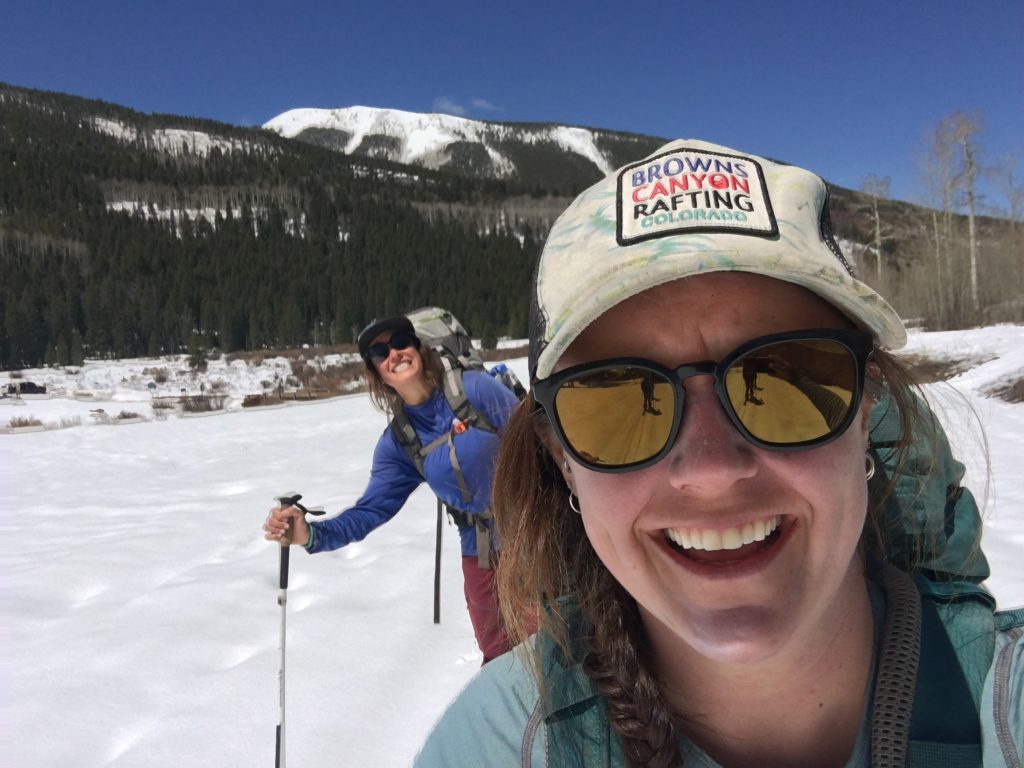
This hut trip is the first of many, I hope. There’s nothing that resets the soul like a night deep in the backcountry where the only things I could hear were a crackling fire, a soft breeze, and the sounds of my friends’ laughter, all lit by the dwindling rays of a Colorado sunset.
_______________________________________________________________________

Monica Nigon moved from Minnesota after graduating with a Journalism degree to Breckenridge, Colorado to pursue her skiing career. With this great move, Monica fell in love with backcountry touring. She spends her off days exploring the Colorado mountains in the solitude of the wilderness as well as taking educational courses to keep her going farther for longer and most importantly, safer. When the snow has melted away, Monica doesn’t leave the mountains but starts climbing with a new perspective. You can find her with chalky hands and shoes too tight as she scales the ridged Rockies on steep slabs, rock climbing to the top.

